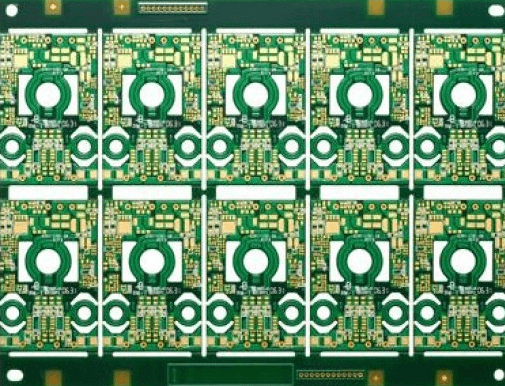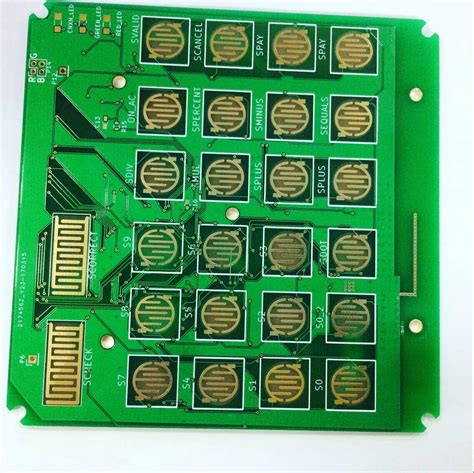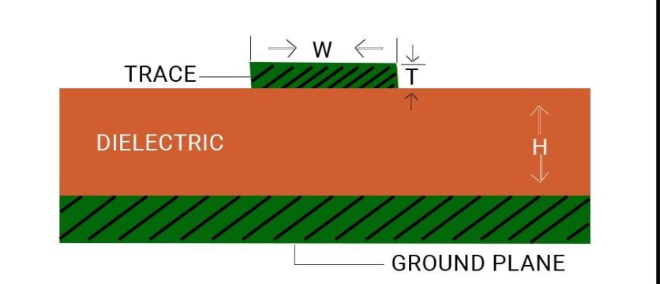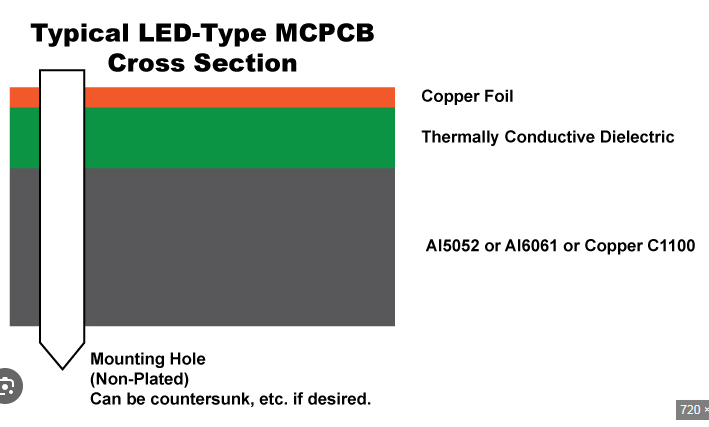Automatic pcb manufacturing machine
Benefits Of Using Automatic PCB Manufacturing Machines
The advent of automatic PCB manufacturing machines has revolutionized the electronics industry, offering a myriad of benefits that enhance efficiency, precision, and overall productivity. These machines, designed to automate the intricate process of printed circuit board (PCB) production, have become indispensable in modern manufacturing environments.
One of the most significant advantages of using automatic PCB manufacturing machines is the remarkable increase in production speed
Traditional manual methods are not only time-consuming but also prone to human error. In contrast, automatic machines can operate continuously, significantly reducing the time required to produce each PCB. This acceleration in production timelines allows companies to meet tight deadlines and respond swiftly to market demands.
Moreover, the precision offered by automatic PCB manufacturing machines is unparalleled.
Human operators, no matter how skilled, are susceptible to mistakes, especially when dealing with the microscopic components and complex layouts typical of modern PCBs.
Automatic machines, however, are programmed to execute tasks with exacting accuracy, ensuring that each board is produced to the highest standards. This level of precision minimizes the risk of defects, which in turn reduces the need for costly rework and quality control measures. Consequently, companies can maintain a consistent level of quality across all their products, bolstering their reputation and customer satisfaction.
In addition to speed and precision, automatic PCB manufacturing machines also contribute to significant cost savings.
While the initial investment in such machinery can be substantial, the long-term financial benefits are considerable. Automation reduces the need for a large workforce, thereby lowering labor costs. Furthermore, the efficiency of these machines means that material wastage is minimized, leading to more cost-effective use of resources. Over time, these savings can offset the initial expenditure, making automatic PCB manufacturing machines a financially sound investment.
Another noteworthy benefit is the enhanced flexibility that automatic PCB manufacturing machines provide.
These machines can be easily reprogrammed to accommodate different designs and specifications, allowing manufacturers to quickly adapt to changing requirements. This adaptability is particularly valuable in an industry characterized by rapid technological advancements and evolving consumer preferences. By leveraging the flexibility of automatic machines, companies can stay ahead of the curve and maintain a competitive edge in the market.
Environmental considerations also play a crucial role in the adoption of automatic PCB manufacturing machines.
Traditional manufacturing processes often involve significant energy consumption and the generation of hazardous waste. Automatic machines, on the other hand, are designed to be more energy-efficient and environmentally friendly. They optimize the use of materials and reduce the emission of pollutants, aligning with the growing emphasis on sustainable manufacturing practices. By adopting these machines, companies can not only improve their operational efficiency but also contribute to environmental conservation efforts.
Furthermore, the integration of automatic PCB manufacturing machines into production lines facilitates better data collection and analysis. These machines are equipped with advanced sensors and software that monitor various parameters throughout the manufacturing process. This data can be invaluable for identifying inefficiencies, predicting maintenance needs, and implementing continuous improvement strategies. By harnessing the power of data, manufacturers can make informed decisions that enhance overall productivity and product quality.
In conclusion, the benefits of using automatic PCB manufacturing machines are manifold, encompassing increased production speed, unparalleled precision, significant cost savings, enhanced flexibility, environmental sustainability, and improved data-driven decision-making. As the electronics industry continues to evolve, the adoption of these advanced machines will undoubtedly play a pivotal role in shaping the future of PCB manufacturing. Companies that embrace this technology stand to gain a competitive advantage, ensuring their success in an increasingly dynamic and demanding market.

Key Features To Look For In An Automatic PCB Manufacturing Machine
When considering the acquisition of an automatic PCB manufacturing machine, it is essential to evaluate several key features to ensure that the investment meets your production needs and quality standards.
One of the primary aspects to consider is the machine’s precision and accuracy.
High precision is crucial in PCB manufacturing, as even the slightest deviation can lead to malfunctioning circuits. Therefore, machines equipped with advanced sensors and fine-tuning capabilities are highly desirable. These features ensure that each component is placed with exacting accuracy, thereby minimizing errors and enhancing the overall reliability of the final product.
Another critical feature to look for is the machine’s speed and throughput.
In a competitive market, the ability to produce a high volume of PCBs in a short amount of time can be a significant advantage. Machines that offer high-speed operation without compromising on quality can help meet tight deadlines and increase overall productivity.
Additionally, it is beneficial to consider machines that offer flexible production capabilities. This includes the ability to handle various PCB sizes and types, as well as the capacity to switch between different production runs with minimal downtime. Flexibility in production can be a game-changer, especially for businesses that cater to diverse client needs.
Moreover, the integration of advanced software and automation features is another vital consideration.
Modern automatic PCB manufacturing machines often come equipped with sophisticated software that allows for seamless design-to-production workflows. These software solutions can include features such as real-time monitoring, error detection, and automated adjustments, which collectively contribute to a more efficient and error-free manufacturing process. Furthermore, the ability to integrate with existing systems and software can streamline operations and reduce the learning curve for operators.
In addition to software capabilities, the machine’s ease of use and maintenance should not be overlooked.
User-friendly interfaces and intuitive controls can significantly reduce the time required for training and operation. Machines that are designed with maintenance in mind, featuring easily accessible components and straightforward troubleshooting procedures, can also minimize downtime and extend the machine’s lifespan. Regular maintenance is essential for ensuring consistent performance, and machines that facilitate this process can offer long-term benefits.
Energy efficiency is another important factor to consider.
As environmental concerns and energy costs continue to rise, investing in a machine that consumes less power without sacrificing performance can be both economically and environmentally advantageous.
Energy-efficient machines not only reduce operational costs but also contribute to a company’s sustainability goals, which can be an important selling point for eco-conscious clients.
Lastly, it is crucial to consider the level of support and service provided by the manufacturer. A reliable support system can make a significant difference in the overall user experience. This includes access to technical support, availability of spare parts, and comprehensive training programs.
Manufacturers that offer robust support services can help ensure that any issues are promptly addressed, thereby minimizing disruptions to the production process.
In conclusion, selecting the right automatic PCB manufacturing machine involves a careful evaluation of several key features, including precision, speed, flexibility, software integration, ease of use, energy efficiency, and manufacturer support. By considering these factors, businesses can make an informed decision that aligns with their production needs and long-term goals, ultimately leading to enhanced productivity and product quality.
How Automatic PCB Manufacturing Machines Improve Production Efficiency
In the rapidly evolving landscape of electronics manufacturing, the advent of automatic PCB manufacturing machines has revolutionized the industry.
These sophisticated machines have significantly enhanced production efficiency, offering a myriad of benefits that extend from the initial design phase to the final product assembly.
By automating various stages of the PCB manufacturing process, these machines have not only streamlined operations but also improved the overall quality and consistency of the products.
One of the primary advantages of automatic PCB manufacturing machines is their ability to reduce human error. Traditional manual methods are prone to mistakes, which can lead to costly rework and delays.
In contrast, automated systems are designed to perform precise and repetitive tasks with high accuracy, ensuring that each PCB is manufactured to exact specifications. This precision is particularly crucial in industries where even the smallest deviation can result in significant performance issues or product failures.
Moreover, automatic PCB manufacturing machines significantly speed up the production process. Manual assembly and inspection can be time-consuming, often leading to bottlenecks in the production line. Automated machines, however, can operate continuously and at a much faster pace, thereby increasing throughput. This acceleration in production not only meets the growing demand for electronic devices but also allows manufacturers to respond more swiftly to market changes and customer needs.
In addition to speed and accuracy, these machines also offer enhanced flexibility. Modern automatic PCB manufacturing machines are equipped with advanced software that allows for quick reconfiguration and adaptation to different designs and specifications. This flexibility is particularly beneficial in a market where product lifecycles are becoming shorter, and customization is increasingly in demand. Manufacturers can easily switch between different PCB designs without the need for extensive downtime or retooling, thus maintaining a high level of productivity.
Furthermore, the integration of automatic PCB manufacturing machines into the production line can lead to significant cost savings. While the initial investment in these machines can be substantial, the long-term benefits often outweigh the costs. Automated systems reduce the need for manual labor, lower the incidence of defects, and minimize material waste. These factors collectively contribute to a more cost-effective production process, allowing manufacturers to achieve higher profit margins and remain competitive in the market.
Another critical aspect of automatic PCB manufacturing machines is their role in enhancing quality control. These machines are equipped with advanced inspection and testing capabilities that ensure each PCB meets stringent quality standards. Automated optical inspection (AOI) and automated X-ray inspection (AXI) are commonly used to detect defects that might be missed by human inspectors. By identifying and addressing issues early in the production process, manufacturers can prevent defective products from reaching the market, thereby safeguarding their reputation and customer satisfaction.
In conclusion, the implementation of automatic PCB manufacturing machines has brought about a paradigm shift in the electronics manufacturing industry. By improving accuracy, speed, flexibility, and quality control, these machines have significantly enhanced production efficiency. As technology continues to advance, it is likely that these machines will become even more integral to the manufacturing process, driving further innovations and improvements in the production of electronic devices. The benefits they offer not only help manufacturers meet the increasing demands of the market but also position them for long-term success in an ever-competitive industry.

The Future Of PCB Manufacturing: Automation And Innovation
The future of PCB manufacturing is being revolutionized by the advent of automatic PCB manufacturing machines, which are transforming the industry through automation and innovation. These machines are designed to streamline the production process, enhance precision, and reduce human error, thereby setting new standards for efficiency and quality in the manufacturing of printed circuit boards (PCBs).
One of the most significant advantages of automatic PCB manufacturing machines is their ability to perform complex tasks with remarkable accuracy.
Traditional PCB manufacturing methods often involve multiple stages, each requiring meticulous attention to detail. However, with automation, these stages can be seamlessly integrated into a single, continuous process.
For instance, automated machines can handle everything from the initial design and layout to drilling, plating, and soldering, all while maintaining a high degree of precision. This not only accelerates production times but also ensures that each PCB meets stringent quality standards.
Moreover, the integration of advanced technologies such as artificial intelligence (AI) and machine learning (ML) into these machines further enhances their capabilities.
AI algorithms can analyze vast amounts of data to optimize production parameters, predict potential issues, and make real-time adjustments. This predictive maintenance capability is particularly valuable, as it minimizes downtime and extends the lifespan of the equipment.
Additionally, machine learning models can continuously improve the manufacturing process by learning from past data, leading to incremental enhancements in efficiency and quality over time.
Another critical aspect of automatic PCB manufacturing machines is their contribution to sustainability.
Traditional PCB manufacturing processes often involve significant waste and the use of hazardous chemicals. In contrast, automated machines are designed to minimize waste and reduce the environmental impact.
For example, precision drilling and cutting reduce material wastage, while advanced filtration systems can capture and recycle harmful byproducts. This shift towards more sustainable practices is not only beneficial for the environment but also aligns with the growing demand for eco-friendly manufacturing solutions.
Furthermore, the adoption of automatic PCB manufacturing machines is driving innovation in product design and development.
With the ability to rapidly prototype and iterate designs, engineers and designers can experiment with new concepts and bring innovative products to market faster than ever before.
This agility is particularly crucial in industries such as consumer electronics, automotive, and telecommunications, where the pace of technological advancement is relentless. By leveraging automation, companies can stay ahead of the competition and respond swiftly to changing market demands.
In addition to these benefits, automatic PCB manufacturing machines also offer significant cost savings.
While the initial investment in such machinery can be substantial, the long-term savings in labor costs, material efficiency, and reduced error rates can be considerable. Moreover, the scalability of automated systems allows manufacturers to easily adjust production volumes to meet fluctuating demand, further enhancing cost-effectiveness.
In conclusion, the future of PCB manufacturing is being shaped by the integration of automation and innovation through automatic PCB manufacturing machines. These machines are revolutionizing the industry by enhancing precision, reducing waste, driving innovation, and offering significant cost savings. As technology continues to advance, we can expect even greater improvements in the capabilities and efficiency of these machines, paving the way for a new era in PCB manufacturing. The transition towards automation is not merely a trend but a fundamental shift that will define the future of the industry, ensuring that manufacturers can meet the ever-evolving demands of the modern world.
Cost Analysis: Manual Vs. Automatic PCB Manufacturing
When considering the production of printed circuit boards (PCBs), the choice between manual and automatic manufacturing processes is pivotal.
The cost implications of each method can significantly impact a company’s bottom line, making it essential to conduct a thorough cost analysis.
This article delves into the financial aspects of manual versus automatic PCB manufacturing, providing insights that can guide decision-making.
Initially, manual PCB manufacturing involves a series of labor-intensive steps, including layout design, etching, drilling, and component placement.
Each of these stages requires skilled technicians, whose labor costs can accumulate rapidly. Moreover, the manual process is prone to human error, which can lead to defects and rework, further inflating costs.
In contrast, automatic PCB manufacturing machines streamline these processes through automation, significantly reducing the need for manual intervention. These machines can handle complex designs with precision, minimizing errors and enhancing overall efficiency.
Transitioning to the cost of equipment, manual PCB manufacturing typically requires a range of tools and machinery, each with its own maintenance and operational expenses. While the initial investment may seem lower compared to automatic systems, the cumulative costs of maintaining and operating multiple pieces of equipment can be substantial. On the other hand, automatic PCB manufacturing machines represent a higher upfront investment. However, this cost is often offset by the machine’s ability to perform multiple functions, reducing the need for additional equipment and associated maintenance.
Furthermore, the speed of production is a critical factor in cost analysis. Manual PCB manufacturing is inherently slower due to the reliance on human labor. This slower pace can lead to longer lead times, which may not be ideal in a fast-paced market where time-to-market is crucial. Automatic PCB manufacturing machines, however, operate at a much faster rate, enabling higher throughput and shorter production cycles. This increased speed can translate into significant cost savings, particularly for high-volume production runs.
In addition to speed, the consistency and quality of the final product are paramount.
Manual processes, despite the best efforts of skilled technicians, can result in variability in product quality. This inconsistency can lead to higher rates of defective products, which not only incurs additional costs for rework but can also damage a company’s reputation. Automatic PCB manufacturing machines, with their precision and repeatability, ensure a consistent level of quality, reducing the likelihood of defects and enhancing customer satisfaction.
Moreover, labor costs are a significant consideration in the cost analysis.
Manual PCB manufacturing requires a larger workforce, which translates into higher wages, benefits, and training expenses. In contrast, automatic PCB manufacturing machines require fewer operators, leading to substantial savings in labor costs. While there is still a need for skilled personnel to oversee and maintain the machines, the overall labor requirement is significantly reduced.
Finally, it is essential to consider the long-term financial implications.
While the initial investment in automatic PCB manufacturing machines may be higher, the long-term savings in labor, maintenance, and operational costs can make it a more cost-effective option over time. Additionally, the ability to produce high-quality PCBs at a faster rate can lead to increased revenue and market competitiveness.
In conclusion, while manual PCB manufacturing may appear less expensive initially, the cumulative costs associated with labor, maintenance, and potential rework can make it a less viable option in the long run. Automatic PCB manufacturing machines, despite their higher upfront cost, offer significant advantages in terms of speed, quality, and overall cost savings. Therefore, companies looking to optimize their PCB production processes should carefully consider the long-term benefits of investing in automatic manufacturing technology.




